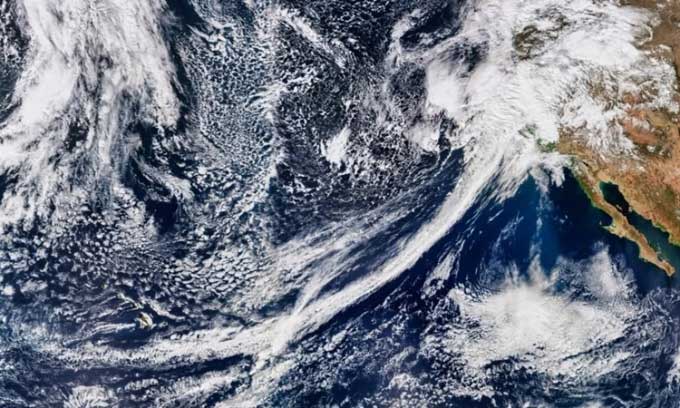Atmospheric rivers stretch over 1,600 kilometers in the sky and have been shifting from temperate regions closer to the poles over the last 40 years.
Although atmospheric rivers have played an essential role in the water cycle long before dinosaurs existed, the term was first described recently, in 1994. This term refers to narrow columns of water vapor flowing through the Earth’s atmosphere, akin to rivers in the sky. Atmospheric rivers transport water from tropical regions near the equator to temperate zones and beyond. They are temporary phenomena, with an average of 4 to 5 atmospheric rivers existing at any given time, according to the U.S. Department of Energy (DoE).

According to NASA, atmospheric rivers carry twice the amount of water compared to the Amazon River. (Image: IFL Science).
Perhaps the most famous atmospheric river is the Pineapple Express, which begins in the Pacific near Hawaii and makes landfall along the western coast of the United States. As NASA explains, atmospheric rivers tend to occur in the subtropical regions of the North and Southeast Pacific, as well as North and South America. Atmospheric rivers can travel enormous distances, often landing in temperate zones between 30 to 60 degrees north and south latitude, such as areas along the western coasts of America, Europe, Southeast Asia, and New Zealand. Here, they release water in the form of rain or snow.
Atmospheric rivers are closely linked to the world’s water system and provide a key water source. In fact, according to the National Oceanic and Atmospheric Administration (NOAA), about 30 to 50% of the annual rainfall in the western United States results from various atmospheric river events. Meanwhile, countries like France, Spain, the UK, and many regions in Southeast Asia receive over half of their rainfall from atmospheric rivers.
However, they also have the potential to trigger severe flooding, landslides, and property damage. This was the case in North America earlier this year. In September, a particularly strong atmospheric river caused heavy rainfall for several days in Canada and southeastern Alaska.
While temperate regions have historically received more rainfall from atmospheric rivers, scientists have recently discovered that slight changes due to climate change could significantly impact the world’s water supply. Research by a team of experts at the University of California, Santa Barbara, revealed a shift in the position of atmospheric rivers. The findings show that they have shifted an average of 6 to 10 degrees closer to the poles over the past 40 years. This change could lead to severe droughts in subtropical regions like Brazil and wetter conditions in countries closer to the poles in Europe and the Pacific Northwest of the United States.
The research team also pointed out that this shift could exacerbate trends leading to greater sea ice loss in the Arctic. As rainfall from atmospheric rivers becomes more common in polar regions during winter, these areas have less time to recover from the melting snow during the summer.




















































